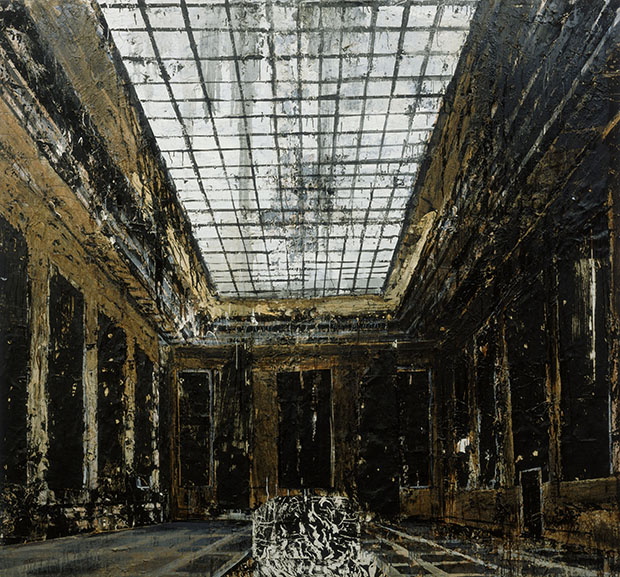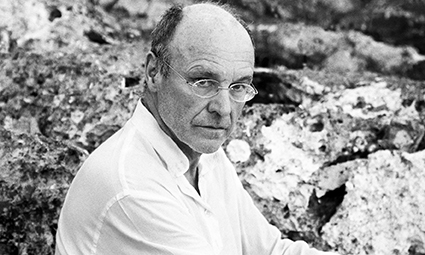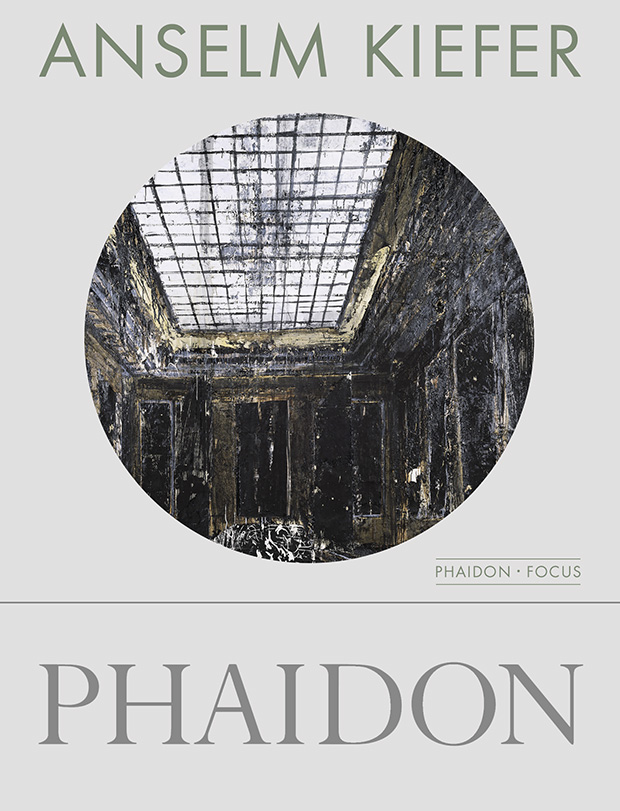
Understanding Anselm Kiefer’s Interior
Prior to the Royal Academy’s show, we look at one key work by the great German painter
No one, beyond the Royal Academy’s curatorial team, knows exactly what’s going on display at next month’s Anselm Kiefer exhibition, yet it is already being described as a blockbuster. The RA is devoting all of its galleries to the German artist, placing him alongside the likes of Anish Kapoor and David Hockney, whose work also occupied every room at the London institution during their respective shows.
Kathleen Soriano, the exhibition curator, says 60 per cent of the exhibition, which opens towards the end of next month, will be a retrospective, while the remaining 40 per cent will be new commissions. It’s hard to know what this newer part will comprise of, as, aside from his works on canvas, Kiefer has sculpted everything from sunflowers to bombers.
Yet among the paintings on show will be a number of important works covered in our new Phaidon Focus book dedicated to the artist. Chief among these is Interior (Innenraum), 1981. It's a huge, striking work, covering about nine square metres. We chose it as the main image for our book jacket, and while its credit sometimes reads ‘oil, acrylic, and paper on canvas’, there’s actually a lot more going on in there, as our author, professor Matthew Biro, makes clear.

The painting is a copy of a photograph of the Mosaic Room in the New Reich Chancellery, "Adolf Hitler’s government offices in Berlin, which were destroyed in 1945,” Biro explains. “Designed by the architect Albert Speer to assert the Third Reich’s historical continuity with the great ancient civilizations of Egypt, Greece and Rome, the New Chancellery was a consciously constructed symbol of National Socialist Germany. As suggested by the Mosaic Room’s gigantic proportions, its huge grid-like skylight, an its almost total emphasis on regular horizontal and vertical lines that rhythmically punctuate the planes of the space, the Nazis used the neo-classical style to connote authority, discipline, order and permanence.”
However, Kiefer's painting has a weathered, dirty quality to it, which undercuts this order, as Biro notes. “By manipulating a photograph of a recognisable Nazi site, Interior forces its beholders to imagine themselves standing in a discredited domain: a room designed to contain and display Hitler in his role as absolute dictator. Yet the setting is overlaid with various natural and material elements – including oil, acrylic, straw, shellac and woodcut fragments – materials that recall different historical periods as well as various types of art-making techniques. The government office feels at once old – ancient or imperial – and, through its historical specificity and photographic character, like a building from the twentieth century.”

What does the artist mean by this? It’s purposefully unclear, Biro reasons. “Does Kiefer monumentalize his country’s National Socialist past? Or does he criticize his contemporary moment, suggesting that Nazism spanned more than the years 1933 to 1945? Ambiguity it central to the work’s magnetism.”
With works such as this in mind, Tim Marlow, the Royal Academy director of artistic programmes, describes Kiefer as a 'history painter', yet it's a kind of history that still resonates with us today. For more on the exhibition, which opens 23 September and runs until 14 December, go here. For greater insight into this important artist and his work, buy a copy of our book, here.